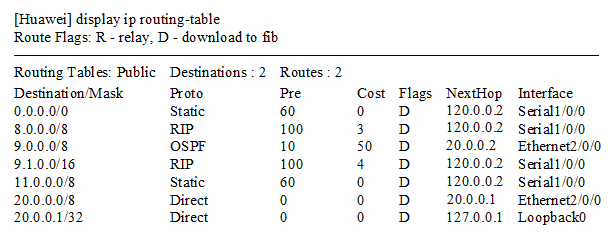The following figure shows a routing table. When this router receives a packet with a destination IP address of 9.1.1.1, the router forwards the packet based on the route 9.1.0.0/16 because the matched bit number in this route is the largest.

The following figure shows a routing table. When this router receives a packet with a destination IP address of 9.1.1.1, the router forwards the packet based on the route 9.1.0.0/16 because the matched bit number in this route is the largest.

The router uses the longest prefix match when deciding which route to take. Each route in a routing table has a prefix length, which is determined by the subnet mask. In the given routing table, the prefix for the route 9.1.0.0/16 is longer than the prefix for 9.0.0.0/8. This means it has a more specific match for the destination IP address 9.1.1.1, and therefore, the router will forward the packet using the 9.1.0.0/16 route. Hence, the given statement that the router forwards the packet based on the route 9.1.0.0/16 is false because it only explains part of the logic. The true explanation is that the router forwards based on the longest prefix match (most specific route).
Routing logic in order: PPM 1. Prefix 2. Preference 3. Metric